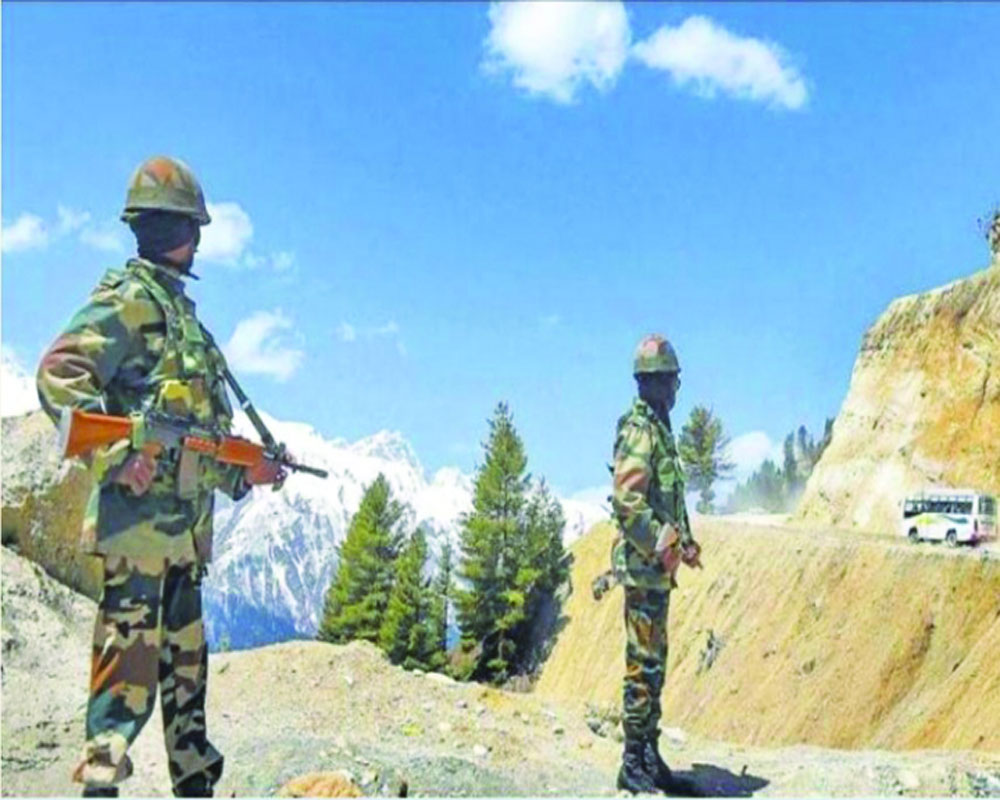Bhutan is most certain to emerge as the next flashpoint as Beijing makes territorial ingress near Doklam
China isn’t expected to concede any territorial advantage it has along its shared border with India and its continued depredations only prove the predictability of its acquisitive strategies and the futility of expecting talks to tame its expansionist ambition. That’s why the report that it had infringed on Bhutan’s sovereignty and set up a permanent settlement 2 km within its border, close to Doklam, didn’t quite come as a surprise though subsequently this was denied by Bhutan’s ambassador. Beijing has anyway mastered the art of smart tradeoffs with our allies. But satellite images have confirmed the report. The news of the Chinese settlement very close to Doklam was first shared by CGTN news producer Shen Shiwei, a media organisation considered to be the Chinese Communist Party’s (CCP’s) stooge, but was later deleted. He had posted pictures of a neat residential settlement complete with amenities. Perhaps this was part of China’s information propaganda war, creating a perception of and the desire for the goodness of the Chinese way of life and intimidating bordering nations to subscribe to territorial and economic transactions loaded in its favour. But that doesn’t mean that it has lost sight of either Bhutan, where it has already ingressed into a wildlife sanctuary, or Doklam in particular. And given reports of the Chinese takeover of Nepal’s bordering villages, the wolf warrior tactic is playing out both in the strategic and information domain. China will never give up Doklam though it simmered down tension with India after the standoff in 2017. That’s because this patch of land is crucial for ensuring its unhindered road connectivity from Chumbi Valley to bordering areas of India and Bhutan. Without this cushion, it would be constricted by both India and Bhutan on either side and wouldn’t like their hawk eyes on it. Similarly, the Chinese consolidation around Doklam threatens India’s chicken neck access to the Northeast, particularly Arunachal Pradesh that China insists is “south Tibet.” Beijing’s desperation is evident from the fact that in 1996, it “offered” to “give up” its claims to the 495 sq km of land in the Pasamlung and Jakarlung valleys of Bhutan in return for 269 sq km in Doklam. And despite a breather to India, hoping to continue a frenemy relationship with Narendra Modi than any other Indian leader and, therefore, cooling down till the latter’s re-election, it fortified its positions close to the site within a year. Its over-adventurism at Galwan eroded that understanding between the two leaders and its continued intransigence has only worsened equations. In fact, this is a pincer attack of sorts, drawing us to the eastern front and compounding pressure on us to vacate the Chushul heights in Ladakh, a strategic perch that allows us a privileged view of the Chinese road to Aksai Chin. China is revving up defence infrastructure along the Line of Actual Control (LAC). Post-Galwan, it has firmed up positions along the central, Sikkim and eastern sectors. It has been ramping up surface-to-air missile sites, increased the number of unmanned aerial vehicles (UAVs) and expanded air bases in Tibet.
Bhutan is most certain to emerge as the next flashpoint as China has never forgotten how the former chose to get close to India during the Tibetan annexation. China further refused to recognise the traditional watershed principle that had decided the boundaries between Bhutan and Tibet. And claimed there were perceptional differences over territory in much the same manner of its argument with India. Since 1981, we have had countless rounds of talks with China at different levels and 22 between Special Representatives alone since 2003. Still we have not resolved our territorial dispute, China now seeking legitimacy for its 1959 claim line. Already, it has browbeaten India at the talks table on Ladakh by calling for a buffer zone, which means our forces cannot patrol up to the points they used to because of the Chinese insistence on a no man’s land. This would allow it to build resources on its side unmonitored and reverse any disengagement move at a short notice. This clause also makes Indian vigilance difficult besides stretching our alertness at all times. And now by pushing us off Chushul in exchange for withdrawing from some areas it has claimed, it is forcing us into a deal. India should not agree to any position that doesn’t guarantee status quo ante across all sectors of the LAC. Both sides have considerable reasons to de-escalate. India, which is dealing with the pandemic spiral and rebuilding a battered economy, can’t afford to devote significant resources to the military at this particular juncture. On the other hand, the Chinese Government wants to focus on its growing GDP, the only major economy to register a growth in a pandemic-hit year. However, earlier in September, after the meeting of the foreign ministers of the two countries, the Chinese Communist Party mouthpiece, Global Times, noted that the implementation of the agreement depended on whether India is able to keep up its end of the bargain. It said: “Unless India followed through, this would be little more than what he called paper talk.” And on November 12, it claimed that reports of India and China having finalised a detailed disengagement were “inaccurate” at this stage. Till there is no signed agreement between the two sides on the logistics of the retreat, not much can be said. For now, India is being rightfully cautious. China has stepped up aggression in Hong Kong, virtually quietening the pro-democracy activists, is heaving down on Taiwan and is threatening Australia with brutal economic decisions for refusing entry of Huawei in 5G operations and investments. Beijing has never believed in “good faith” diplomacy. It will step up its multi-pronged offensive against us and choke our allies, too. It has already got to Bhutan.


























